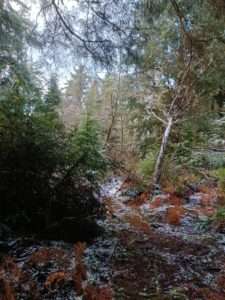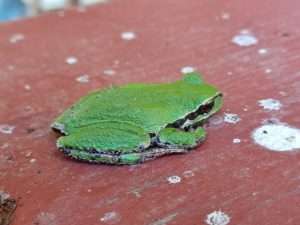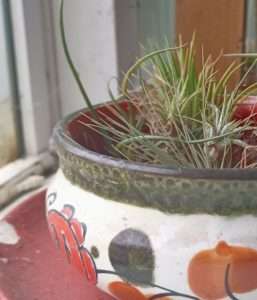 If you’ve explored my classes, you may have noticed that one of them is titled “Ecopsychology For Everyone.” It’s a good introduction to what ecopsychology is and how to incorporate it into everyday life regardless of your background. However, for those who haven’t heard of this approach to psychology before, allow me to help answer the basic question: what is ecopsychology?
If you’ve explored my classes, you may have noticed that one of them is titled “Ecopsychology For Everyone.” It’s a good introduction to what ecopsychology is and how to incorporate it into everyday life regardless of your background. However, for those who haven’t heard of this approach to psychology before, allow me to help answer the basic question: what is ecopsychology?
The definition I use is “the psychology of how nature is good for us”, while ecotherapy is “the practice of using nature in therapeutic settings.” In short, ecopsychology is the theory and ecotherapy is the practice, though some people use these terms interchangeably. (More about that in a moment.)
How is Nature Good For Us?
We didn’t evolve in boxes. Instead, Homo sapiens sapiens and our direct ancestors in the genuses Homo and Australopithecus, among others, evolved on the sub-Saharan African savanna that formed as the climate dried and forests were broken up by grasslands. Our brains were attuned to wide, open spaces with varied terrain and scenery made of asymmetrical features. And there were certain things that were especially attractive, like high points to get a better view of the land around us (and potential threats), and fresh water to drink.

In fact, our largely indoor, increasingly urban lifestyle in the West is really only a couple of hundred years old. While cities have been a reality for several thousand years, it took industrialization to move the bulk of people into them full-time. We have very adaptable brains, but can’t overwrite millions of years of evolution in the space of a few generations.
Look what happens when we spend time in a setting that isn’t dominated by humans and our creations. Getting outside has a number of measurable physiological effects that can also boost your mood. Your blood pressure drops, your resting heart rate drops, and the exercise boosts endorphins. Plus stress chemicals in the brain like cortisol drop and your sympathetic nervous system quiets down while ramping up your parasympathetic nervous system, and you get a nice dose of serotonin and dopamine. Outdoor activity can help with symptoms of depression and anxiety, as well as help with overall stress relief and fighting fatigue. If you have memory issues, to include due to depression, being outside can improve working memory.
And here’s the thing–some of these effects can kick in as quickly as after ten minutes outside. You don’t necessarily have to be hiking or doing something else physically strenuous; sitting and enjoying what’s around you also gets you some of these benefits. If you’re unable to get outside, having a window with a view of a natural scene is beneficial, and if all else fails, even pictures of nature can help. (Florence Williams’ book The Nature Fix has a lot more information on the benefits of being out in nature, and a good solid bibliography for even more reading.)
Obviously this requires a person to have access to greenspace of some sort, and the time and ability to get to it. But if you are able to get outside, whether hiking or walking or just sitting in a nice spot, it can really help achieve the wonderful “everything is marvelous!” feeling that is central to a lot of both the theory and practice of ecopsychology.
What is Ecopsychology Vs. Ecotherapy?
As I’ve already mentioned, ecopsychology is the theory that helps to explain why nature is beneficial for our mental health and beyond. Ecotherapy, then, is how we put that information into practice in a therapeutic setting. But what does that look like?
 Sometimes it’s something very simple, like including questions about a client’s relationship to nature in an intake form. These forms allow the therapist to get some basic information about a new client’s current situation, to include relationships of all sorts, and that can include their relationship to the natural world and to individual natural places. Then as the therapist helps that client to start untangling their mental health, they can factor in that connection to nature as one of many relationships that have a positive or negative effect (or both!) on the client.
Sometimes it’s something very simple, like including questions about a client’s relationship to nature in an intake form. These forms allow the therapist to get some basic information about a new client’s current situation, to include relationships of all sorts, and that can include their relationship to the natural world and to individual natural places. Then as the therapist helps that client to start untangling their mental health, they can factor in that connection to nature as one of many relationships that have a positive or negative effect (or both!) on the client.
Many ecotherapists like to incorporate nature in the actual clinical setting. This can include having natural objects like stones, plants, and small water features in their office. Some may even meet with their clients outside in a location that allows for privacy from others, such as a courtyard outside the office, or even in a more wild setting like a quiet hiking trail. They may actively incorporate that setting into therapy, such as using forest bathing to help a client feel more grounded and calm.
Some of the activities ecotherapists may incorporate into their work with a client may involve nature directly. For example, they might ask the client to pull a natural item out of a basket that they feel represents how they feel that day, and then explain why (such as “I picked this pine cone because I feel very prickly today.”) Or they may have the client do a guided meditation where they visualize walking down a path to a beach or in a forest. The therapist can even “prescribe” nature time, by asking the client to spend at least an hour a week in an outdoor greenspace, if they have access to it, and then asking the client how that time outside made them feel compared to how they were at the beginning of therapy.
Ecopsychology: Not Just For Ecotherapists!
One thing I want to emphasize is that ecopsychology is not a specific modality like, for example, psychotherapy or behavioral psychology. Rather, it is a green lens through which any psychological framework may be viewed. All the practitioner has to do is incorporate the client’s relationships to the natural world into their practice, and perhaps use the beneficial properties of nature for the good of the client, if this is appropriate to their treatment.
 However, anyone can benefit from the basic concepts of ecopsychology for overall stress relief and mental well-being. Sometimes it really is as simple as getting outside; even if you aren’t able to go for a long hike, for example, just sitting quietly in a park or other greenspace can be beneficial. Adding things like houseplants and interesting bits of driftwood to the home offers reminders of non-human nature, and brings some of the benefits of the outdoors inside.
However, anyone can benefit from the basic concepts of ecopsychology for overall stress relief and mental well-being. Sometimes it really is as simple as getting outside; even if you aren’t able to go for a long hike, for example, just sitting quietly in a park or other greenspace can be beneficial. Adding things like houseplants and interesting bits of driftwood to the home offers reminders of non-human nature, and brings some of the benefits of the outdoors inside.
I’ve written several other articles on ecopsychology and ecotherapy at my website http://www.watershedecotherapy.com if you’d like to read further. I also recommend the following books as just a few of the many excellent texts on the topic:
The Nature Fix: Why Nature Makes Us Happier, Healthier, and More Creative by Florence Williams
The Nature Principle: Reconnecting with Life in a Virtual Age by Richard Louv
Ecopsychology: Restoring the Earth, Healing the Mind edited by Theodore Roszak, Mary Gomes, and Allen Kanner
Coming Back to Life: The Updated Guide to the Work that Reconnects by Joanna Macy and Molly Young Brown
